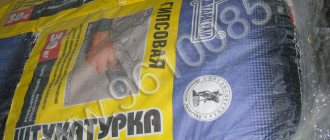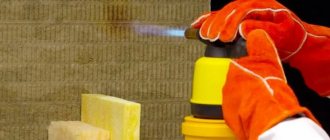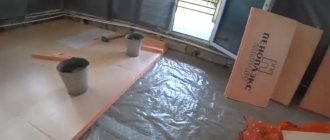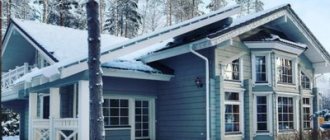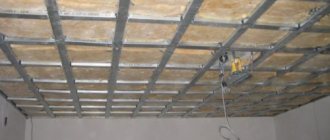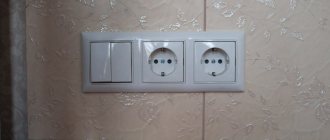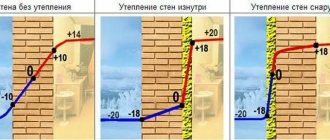The change house belongs to the category of temporary technical structures that are installed at the site of construction work and serve to store various equipment, construction materials, as well as to locate working personnel there. As a rule, construction is carried out during the warm season. Then it may not be insulated. But if construction is delayed and moves into the winter, then it’s worth thinking about insulating the cabin.
After the construction of any objects is completed, the change house is most often dismantled due to its uselessness. But enterprising land owners often adapt it for other purposes.
After a little improvement, it can turn into an excellent bathhouse or a good country house, barn or other utility room. This is where the need for insulation of such a structure arises. Metal and wooden cabins are usually insulated from the outside and from the inside. We will consider these questions in more detail.
Do-it-yourself insulation of a cabin
Owners sometimes carry out thermal insulation of their cabins themselves. A simple insulation technology allows even an inexperienced person to correctly attach the thermal insulation material; the main thing is to follow the main points and first consult with an expert.
Thermal insulation of the cabin from the outside
In order for the insulation of walls to be successful and without additional costs, the owners carefully monitor the sequence of work carried out. Thermal insulation of the outer side of the outbuilding begins with the installation of a layer of vapor barrier material. For this purpose, materials such as polyethylene film, foil and others are used.
The main task of the vapor barrier layer is to ensure maximum ventilation of the façade of the building. If the surface for installation is too smooth, fasten the slats vertically, with their help the vapor barrier material will be held in place.
Now we begin to install the thermal insulation. Experts recommend using mineral wool or fiberglass products. For optimal protection of the building, two layers with a thickness of 10 centimeters each are enough, although when insulating a cabin for living in winter, an additional layer is fixed. Mineral wool does not need special attachment to the main surface: due to its rigidity, the slabs fit tightly to the vertical slats. Gaps and continuous joints are not allowed between them.
A special film is mounted on the heat insulator to provide waterproofing, which will prevent moisture from getting inside. The waterproofing material is secured using a furniture stapler. The film is overlapped by 10 centimeters to ensure maximum protection, the joints are sealed with special tape.
Internal thermal insulation
The next stage is insulation of the interior of the cabin. Each owner of an outbuilding chooses the methods of insulation independently. Cotton insulation is common among insulators for internal thermal insulation of utility buildings. It is environmentally friendly and safe. This material is difficult to cut, so the work will take quite a lot of time. Some owners use thermal insulation materials similar to products for external insulation.
When installing insulation, it is important to remember to install vents to quickly remove condensate that forms. Vents are located at the top and bottom of the wall
To enhance thermal insulation, the insulation is covered with a special material - penofol. Its surface creates a “thermos effect”.
Thermal insulation using penofol
To carry out high-quality insulation, penofol is fixed in solid parts, which significantly reduces the number of joints between pieces. All seams formed are carefully sealed with special tape to ensure maximum tightness.
To ensure maximum heat conservation, experts advise insulating the floor and ceiling. The whole process is similar to thermal insulation, which was described earlier. After finishing the internal insulation work, they think about the aesthetic design. Sheets of plasterboard are attached to the insulation, which level the surface and improve the quality of sound insulation. The fasteners are self-tapping screws and dowels. Instead of gypsum boards, fiberboards are sometimes used. The last stage is finishing the cabin according to the owner’s preferences.
For a summer residence, you can visit the official website. Product quality is guaranteed!
A special frame made of metal parts makes our cabins reliable and durable, and galvanized cladding on the outside makes the cabins durable and increases their service life. It also protects against precipitation and high humidity. Insulated metal cabins
are equipped with insulation, which makes them reliably protected from the cold, so our
insulated metal cabins
can be used perfectly at extreme temperatures. In conditions of constantly low temperatures, this proposal will be an ideal solution for business and personal needs.
General rules for thermal insulation
To properly insulate a wooden outbuilding, certain rules are followed.
- First, we prevent heat loss through the roof - we cover the structure with a special film. Only after this can the roof be laid in the form of corrugated sheets or ondulin.
- To increase heat resistance, MDF panels are used, installed on special profiles. We fill the free space with a heat insulator of your choice.
Change houses made of metal are highly resistant to mechanical and other influences. The metal frame is completely protected from moisture by a special covering. But the roof of an outbuilding is often susceptible to corrosion processes. To prevent corrosion, it should be treated with a polymer-based coating or paint and varnish products.
Wall structures are sheathed with clapboard, block house or plastic panels. Thermal insulators are mineral wool or polyurethane foam. To prevent heat loss, cracks and joints are sealed with tongue and groove boards. Combined outbuildings are insulated in the same way.
Where to start insulating a cabin
If you are just planning to purchase a cabin for winter living, then first of all you need to pay attention to the material from which the structure is made. There are three main types of cabins: metal, wood and combined.
- The metal structure is a frame covered with profiled galvanized iron. The design is resistant to moisture penetration and therefore exhibits better heat retention ability.
- A wooden change house is very vulnerable to the penetration of cold and moisture into the room, and therefore requires more careful thermal insulation.
- A combined cabin is a structure made from several materials. Insulation must be carried out taking into account the material of the cabin in its individual areas.
Materials and methods
Internal or external lining
There are three ways to position the insulation:
- external,
- interior,
- intra-wall.
The latter, of course, is preferable, but it is only possible in frame structures. In addition, it is advisable to do it during the construction stage, since dismantling the entire internal lining is very problematic and expensive.
If we talk about the remaining two, then it is better to focus on the external location of the thermal insulation, and here’s why:
- Firstly, with an internal location, the already limited internal volume of the room will decrease;
- Secondly, wall structures will not freeze, which will increase their service life;
- Thirdly, it is undesirable to use many materials for interior work due to their chemical composition and effect on the atmosphere of the room;
- Finally, sheathed insulation will further protect your walls from the elements, corrosion, solar radiation and pests.
If you don’t want to bother with the sheathing, or this is not possible, you can place the insulation from the inside. In the case of using polystyrene foam or expanded polystyrene, this completely simplifies the task, since these materials do not need waterproofing and can remain open, but this option is acceptable only as a temporary measure, for example, as insulation of a shed for builders or workers.
Ecowool
If the insulated change house will be used as a country house or other permanent habitat, then additional requirements will be imposed on thermal insulation:
The material must be non-flammable, since otherwise there is a serious danger to the life and health of people, as well as the safety of things and furniture; The heat insulator must be non-toxic
The change house will be your bedroom, kitchen and shower room at the same time, so it is important that the material does not emit any toxins or chemical compounds harmful to humans; The insulation must have a long shelf life. Country houses have been used for years, so it is advisable to use material with an adequate service life.
Ecowool best meets all these requirements - a modern thermal insulation material consisting of 80% recycled waste paper or recycled cellulose, as well as boric acid (12%) as an antiseptic and seven percent impregnated with fire retardants.
There are several ways to lay this material:
- Manual;
- Mechanized dry;
- Mechanized wet.
In case of small volumes (our case), manual laying is used. This allows you to do the work yourself and significantly reduce costs.
Now let’s talk about how to insulate a cabin with your own hands using ecowool. Installation instructions are quite simple:
A vertical sheathing is placed on the wall. The distance between the slats is 40 - 50 cm.
- Starting from the bottom, the sheathing is sheathed with clapboard to a level of 50 cm.
- The ecowool is removed from the packaging and fluffed so that its volume increases three times.
Fluffy cotton wool is poured into the gap between the lining and the wall and compacted with hands until the material begins to spring back.
- Next, the next line of lining is filled, again at 50 cm
, and the process is repeated. - In this way the entire wall is covered.
- Lignin, which is part of cellulose, after interacting with atmospheric moisture, forms a hard crust that will protect the cotton wool from moisture and wind.
Styrofoam
Polystyrene foam or expanded polystyrene can be glued to metal using liquid nails, and covered with roofing felt on top. As a temporary measure, this is a completely acceptable option, and the insulated metal shed is ready.
You can also use this material for interior cladding. You can also use liquid nails for this. After fixing the sheets to the wall, the cracks and spaces between them should be covered with foam.
If we compare polystyrene foam and polystyrene foam, then polystyrene foam will turn out to be a more effective material:
- it is stronger;
- has lower thermal conductivity;
- In addition, the sheets of this material are equipped with locks that will save you from treating the joints with foam.
The price of expanded polystyrene is slightly higher,
Ceiling insulation
A significant part of the warm air rising upward is lost through the ceiling, so its insulation is a necessary step.
- A waterproofing material is laid on the outside to protect the roof sheathing.
- Thermal insulation slabs are laid in the spaces between the beams and secured using thermal insulating adhesive or polyurethane foam.
- Penofol is laid.
- A lining or sheet decorative material is attached.
To avoid heat loss through the windows of a trailer insulated for the winter, there are two options to choose from:
- Install a third glass into the frame of a regular wooden window with two glasses;
- Replace standard windows with efficient metal-plastic double-glazed windows.
Heating in a change house
A heat shield must be installed around the stove.
How to heat the cabin, other than a stove? Today there are many models on sale, the leader of which remains the Buleryan pyrolysis oven. It is very economical, as it works on the principle of afterburning pyrolysis gases. It quickly warms up the air due to convection pipes and practically does not burn oxygen; one load is enough for 6 hours.
If electricity is supplied to the cabin, then the best option would be a heat fan with a ceramic heating element. Both devices allow you to quickly warm up. The disadvantage is the same rapid cooling. At the same time, to install the heater, you do not need to prepare a place, unlike a stove.
The installation of the furnace must be carried out according to certain rules:
- a metal plate is placed on the floor with a minimum distance of 30 cm in front of the firebox door;
- there should be at least half a meter to the walls;
- heat shields need to be installed on the walls;
- a chimney pipe is required.
By the way, the chimney is one of the most important elements. The use of penoizol is much faster than insulating a cabin with polystyrene foam. You can see this in the video below.
Construction trailers are temporary mobile housing that has become popular on construction sites for geological or oil and gas work. These cabins solve many problems, the main one of which is the accommodation of workers at remote work sites on a rotational basis. The functions of wagons during modular construction are varied, because the change house also serves as a home; it can be converted into a workshop, laboratory, storage space for a diesel generator, or turned into a moving office or foreman’s room.
The production of trailers is carried out taking into account the requirements for the premises, which can accommodate from 1 to 8 people. The advantage of these structures is that they are completely ready for use after shipment from the manufacturer’s factory. The cabin is equipped with ventilation systems, heating (water or oil radiators or electric heaters), electricity, security or fire alarm systems. The metal frame makes the construction of the trailer more reliable than a wooden building. But in an insufficiently insulated carriage it can be quite cold in severe weather conditions.
How to equip it correctly
The arrangement of the cabin depends on the size and layout of the structure. To make your house comfortable, you need to use useful squares wisely. Small-sized one-room modules will become a functional studio. In large rooms, you can install a partition in the bathroom area. A veranda and a small porch will add comfort.
Cabin designSource yandex.by
Options for cabins consisting of two blocks connected by a vestibule are considered convenient. In one zone there is a bedroom, in the second there is a kitchen-dining room and a storage system. Instead of a large bed, you can take a transforming sofa, and instead of a closet, a tall, spacious chest of drawers. A shoe rack and a hanger are installed in the hallway.
Residential change houseSource bytovok-arenda.ru
In small-sized cabins, compact furniture is used. The sleeping place is located on the short side of the rectangular “trailer”. The ramp bed is a convenient design, in the inner drawers of which you can store bed linen and things. Low shelving combines the function of seating.
Tiny change houseSource yandex.ua
For a family with a child, designers recommend using bunk beds in the cabin. The sleeping area is located on the top floor; a storage system or table is installed below. If the building is high (more than 3.5 m), then the bed is placed in the attic. To avoid stuffiness, forced ventilation is installed.
The disadvantage of change houses is low ceilings and limited space. Large windows will help correct this deficiency. Designers recommend enlarging the openings or installing sliding glass door blocks on the entire wall. Natural lighting and the absence of a partition visually make the “trailer” larger.
The kitchen takes up all the free space in the shed. Full-size cabinet furniture, 0.6 m deep, often does not fit into the limited squares of the temporary shed. Instead of a large set, narrow pencil cases are used, which are placed in the corners. Instead of a full-fledged table, a folding model or a bar counter is appropriate, and stools instead of chairs.
If the shed does not have enough space to store items, then purchase 2-in-1 furniture. A narrow sofa (bench) combines functions with a cabinet. Modular options that are easy to move around the room are appropriate. Small items can be hidden in containers. Boxes are often used as chairs.
Miniature houseSource yandex.ua
Convenient change houseSource yandex.ua
When there is a lack of free space, unnecessary interior items add a feeling of clutter to the design. Oversized furniture and options with voluminous decor are contraindicated in the room. It is better to furnish the rooms in a minimalist style. Instead of cabinets, shelving will help to visually unload the space.
Country house designSource 4archive.org
Cozy roomSource yandex.ua
Interior of individual roomsSource yandex.ua
Modules with all amenities are a popular option that is often used on the site. A properly designed temporary shed will turn into a miniature comfortable house. In order for the structure to last for a long time, it is necessary to decide on the layout, external and internal decoration.
Heating of the cabin
Heating of the cabin in the cold season is done using devices without open fire.
These are mainly oil radiators, furnaces with closed fireboxes and heat guns.
- Heat guns are compact and powerful devices. There are electric, gas, water, infrared, diesel and universal multi-fuel options.
- The lockable oven is safe and economical. It is equipped with a protective casing that improves the conversion of warm air and eliminates thermal radiation inside the trailer.
- The oil radiator uses energy sparingly and has a horizontal position sensor that turns off the device if it falls.
Proper insulation of all elements of the trailer will create comfortable conditions for staying in it in winter.
Part 2
I have a kind of frame structure, popularly called a “change house”, but I proudly call it a “house”, with 50 mm insulation. Arriving at the dacha in the spring, it became clear to me that it would be impossible to stay overnight in the house. The temperature, even after intensive heating attempts, did not rise higher than 15 degrees. Cold walls, icy floor... The wood didn't heat up at all. It was decided to stop this outrage with minimal effort and resources.
By asking the same happy owners of cabins and searching on the Internet, I decided on foamed polyethylene as the material for insulation.
Foamed polyethylene is a sheet (roll) combined heat and sound insulating material. Available with foil sides and without foil. They say it reflects radiant energy and works even faster and more efficiently
It didn't matter to me, below you will see why
So, the insulation process with explanations:
We bought 5mm polyethylene foam at a hardware store. several rolls, furniture stapler + staples, tape, utility knife. The amount of polyethylene was calculated along the internal perimeter of the cabin, along all walls, floor and ceiling. Well, in terms of the capacity of the machine, of course.
polyethylene
a roll of polyethylene another roll
front of work, room 2x2x2 meters
The insulation is cut into strips to the height (or length) of the walls and attached with a stapler. I did it overlapping, it’s easier and faster.
As you can see, I made the foil side outward. Simply because I have a hard time imagining how to be in a sparkling silver room like a Christmas tree. Radiant energy didn’t inspire me, to be honest.
Sheets on the wall I also made allowances on the floor and ceiling, turned the corners and nailed them with a stapler. I did not cut the sheets in advance, but directly on the floor already nailed the sheet on the floor. Those. I made it from top to bottom from a whole roll.
Floor-ceiling I'll explain why
The most important thing is to remove drafts from the cracks between the boards and prevent warm air from escaping from the room. So I did it to be sure and, again, quickly
After all the work with polyethylene is done, it must be taped along the seams. So that there are as few places as possible for warm air to escape.
This is how we glue it
Walls Floor
The most difficult thing to do is the ceiling, the material falls down, it’s hard to hold with your hands. You also have to attach it with staples and try not to twist it. I didn’t dare tape off the wiring and lamps and left a strip.
kitchen ceiling
I hung straw blinds on the wall in the room, and placed two carpet runners on top of the polyethylene floor. In general, it is customary to cover this polyethylene with something, i.e. the floor is hard covering (plywood, laminate), the walls are plasterboard or something similar. Everything is simpler and simpler for me, I didn’t hide anything. By the way, it’s not that easy to damage it and you can’t pierce it with your finger unless you try hard.
Result of use by season:
- The room temperature rises after turning on the heater in 15 minutes from 15 degrees to 24 °C. And it stays like that until you open the door.
- Polyethylene takes the temperature of the room, blocks heat from escaping outside, and does not allow drafts to pass through. Both the floor and walls heat up very quickly.
- If you remove heat leakage from the windows and front door, the result is excellent! When the outside temperature is 10 °C. at night, in the change house it was 20 ° C in the morning. and in a room with a heater at a minimum - 24 ° C. (without interior doors, which I removed).
This is a very good result of insulation, because without insulation, heating the room at full power and with the door closed, it was 20 ° C, and where there is no heater, the temperature was 12-15 ° C.
Thank you for your attention, I hope my experience will be useful. If you have any questions, please ask
Installation under a metal house
When installing thermal insulation, you should not forget about creating special vents in the upper and lower parts of the walls, which eliminate condensation. Penofol from the trailer, laid on top of the insulating material, enhances the thermal effect, since the foil part of the product perfectly reflects heat. When gluing, it is better to use solid pieces of penofol to obtain the most airtight coating. If seams do form during the work, they are carefully taped with foil tape.
A similar technology is used to insulate the ceiling and floor inside temporary cabins with trailers.
Every home craftsman can insulate a metal shed (sometimes made of wood) on his own, following step-by-step instructions. A responsible DIY event will save a significant amount of money. And the result of the work done will bring real pleasure.
Do-it-yourself materials for insulating a cabin
A winter dacha cabin should be warm even in severe frosts, especially if these are residential trailers for living
It is important to thermally insulate everything in such a design:
Styrofoam
Different materials are used for such work. The most popular is polystyrene foam. Such thermal insulation does not cause allergies, does not absorb moisture, can last a long time if installed correctly, and is also non-flammable.
- Moisture resistance.
- Durability.
- Not afraid of temperature changes.
- Does not burn.
The downside of the material is that it is quite difficult for them to finish round bases. Its sheets do not bend. Therefore, pockets of air may remain under the panels, which will cause moisture to accumulate there. This can lead to rotting of the frame.
Before choosing polystyrene foam, you should familiarize yourself with its parameters, since with the help of certain types it is impossible to properly insulate a trailer for living there in winter. It is recommended to purchase polystyrene foam brand PSB-S40.
Experts also advise not to use polystyrene foam to insulate the trailer from the inside. Although it does not burn, when heated it melts and releases toxins into the air that are harmful to humans.
Minvata
This substance has improved thermal insulation quality and does not burn.
- The material is soft but durable.
- Does not burn.
- Retains heat and keeps out cold.
- The vapor permeability coefficient is high.
- Can last an average of 20 years if installed correctly.
When working with such material, it is important to follow the rules. Activities should be carried out in protective equipment
To install the thermal insulator, you will need to first build a frame made of wood or aluminum. Many summer residents prefer mineral wool for insulation, but it costs more than polystyrene foam.
Cotton thermal insulator
This substance is the safest for today. It is high quality and environmentally friendly. Can be used to insulate walls inside a trailer and does not require special installation skills. It is often used for thermal insulation of cabins in which it is planned to live. The downside is that the product is difficult to cut.
Related works
Additional insulation of not only the ceiling, but also, just as important, the floor and walls will help reduce heat loss and, as a result, reduce the cost of heating the cabin. Professional builders also recommend sealing door and window fillings, through which a significant amount of heat is also lost. Only a comprehensive solution to the problem of insulation will lead to the achievement of the necessary energy efficiency and guarantee a positive final result.
Insulation materials
A change house without insulation will not perform all the functions and tasks for which it is intended. Therefore, you should carefully consider and select the insulation technology, as well as select a suitable insulator.
The modern market provides a variety of thermal insulation materials. Let's look at the most common ones in detail.
This type of heat insulator is mainly used to insulate the walls of outbuildings. Foam insulation is beneficial when finishing wooden cabins. The material is resistant to moisture, simple and easy to install. Foam insulation has disadvantages: short service life and large volume for good insulation, and with low-quality products - significant heat loss. Several layers of polystyrene foam will reduce the area of the room, and improper use of the structure will lead to a fire.
Mineral wool and fiberglass
The advantages of the materials are fire safety and excellent thermal insulation characteristics, subject to all the requirements of the technological process. If you install several layers of heat insulation, the acoustic properties of the rooms will increase. Disadvantages - the components are harmful to health.
Such fibers are produced through careful processing of basalt rocks. On the construction market, a common form of material is slabs, which can be easily cut to size and laid. The heat insulator is completely resistant to fire and does not undergo deformation processes for a long time. The easy-to-use material will not take up much free space, so the area of the shed will remain almost the same. The disadvantage is the many seams that remain after installing thermal insulation.
This thermal insulation material is the most common and effective for insulating commercial buildings. There are 2 types: liquid and hard. Experts recommend using the second option to increase the heat capacity of the building’s exterior. It is excellent for strengthening roofing systems and exterior walls. Using the unique structure of polyurethane foam, it is possible to mask possible defects in the roofing system and increase the temperature in the structure.
Polyurethane foam is sometimes used in another way - by spraying it onto indoor cladding. It fills all the places where cold air penetrates, thereby providing maximum thermal insulation.
Advantages
:
- high level of heat resistance;
- the material quickly becomes hard, which instantly stops heat loss;
- laid flat, without seams or fasteners;
- does not contain chemicals, is safe for health;
- protects the coating from mechanical and other influences;
- service life - from 30 years with proper use.
To carry out proper insulation, you need to know detailed technology and act in strict accordance with all stages of the thermal insulation process.
Requirements
The main function of the material is to make the room temperature comfortable for year-round living. Accordingly, certain requirements are imposed on it. Even at high temperatures, it is necessary to exclude the possibility that the insulation will catch fire with an open flame. It must be compatible with the frame. The wear-resistant qualities of the material must be at a high level to ensure a long service life.
In addition, if it is planned that the premises will be intended for permanent housing, the products must be completely safe for people, their life and health.
Features of gas connections
When connecting gas stoves, water heaters and other types of equipment, flexible hoses are also used. Unlike water models, they are yellow and are not tested for environmental safety. For fixation, end steel or aluminum reinforcement is used. There are the following types of devices for connecting gas appliances:
- PVC hoses reinforced with polyester thread;
- made of synthetic rubber with stainless steel braid;
- bellows, made in the form of a corrugated stainless steel tube.
The Santekhkomplekt holding offers engineering equipment, fittings, plumbing fixtures and devices for connecting them to communications. The assortment is represented by products and materials from well-known foreign and domestic manufacturers. Discounts apply for bulk purchases, and product quality is confirmed by standard certificates. For information support and assistance, each client is assigned a personal manager. The ability to arrange delivery within Moscow and to other regions of the Russian Federation allows you to quickly receive the purchased goods without unnecessary hassle.
Upon completion of the technological and production tasks associated with the arrangement of a sewer system in an apartment building, industrial building, as well as in a private household, it is necessary to test the involved system using the forced flow method. This task is used to identify possible defects or improper installation of the entire involved sewerage part, and the test report for internal sewerage and drainage systems will be material evidence of the work on acceptance of the facility.
A visual inspection should be accompanied by inclusion in the test report of internal sewerage and drainage systems according to SNIP, which is currently represented by the current regulations of the “D” series appendix, which corresponds to SP 73.13330.2012 “Internal sanitary systems of a building”, recently a new one has been applied updated working edition according to SNiP 3.05.01-85.
The change house belongs to the category of temporary technical structures that are installed at the site of construction work and serve to store various equipment, construction materials, as well as to locate working personnel there. As a rule, construction is carried out during the warm season. Then it may not be insulated. But if construction is delayed and moves into the winter, then it’s worth thinking about insulating the cabin.
After the construction of any objects is completed, the change house is most often dismantled due to its uselessness. But enterprising land owners often adapt it for other purposes.
After a little improvement, it can turn into an excellent bathhouse or a good country house, barn or other utility room. This is where the need for insulation of such a structure arises. Metal and wooden cabins are usually insulated from the outside and from the inside. We will consider these questions in more detail.
What can it contain?
Externally, the change house resembles a small house with different layouts. The premises contain oversized furniture for relaxation and cooking. If you properly distribute the usable area, you can equip a bathroom. Often the building is placed next to the main cottage, turning it into guest apartments.
Arrangement of a change houseSource nikasdom.ru
Comfortable parameters of residential premises - 18 square meters. The dimensions of the modules can vary from 6*3 m to 7*3 m, height - from 2 m. The standard layout includes two rooms, a bathroom and a kitchen. Between the zones there is often a small dressing room-corridor.
Convenient change houseSource freelance.ru
The dimensions of technical buildings are from 6 to 14 m2. Traditionally, a block contains one room, which can be divided by partitions or ordered with ready-made walls. Multi-room models have an entrance and window for each area. Standard height is 2.5 m.
A separate cabin will become a convenient bathhouse. The minimum size of the “trailer” is 12 squares. A boiler is needed to heat the liquid, and a sewer system is needed to remove dirty moisture. Wooden benches and containers for cold and hot water are installed in the washing department. In the room you can put a massage bed and a shower. Depending on the size, the steam room can accommodate 2-3 people.
It’s easy to set up a summer kitchen in a change house. A separate 10 m2 “trailer” will accommodate a full-fledged work area with an “island” and a set of furniture. Electricity, water and sewerage are supplied to the structure. To keep the room from getting hot, you need forced exhaust.
Medium-sized modules (11-12 squares) are equipped as a utility block. The design is convenient for storing garden tools. To increase capacity, ceiling racks are needed. The premises are often converted into a food warehouse. Perishable food requires a refrigerator and an electricity supply.
Change house with bedroom and kitchenSource yandex.ua
Compact buildings of 2*3 m will become a full-fledged bathroom. In the premises you can place a bath (shower stall), a sink, and a toilet behind the partition. If the family is large, then the toilet should be equipped with a separate one. Each zone has a separate entrance. The boiler is installed next to the washbasin or in the corner.
